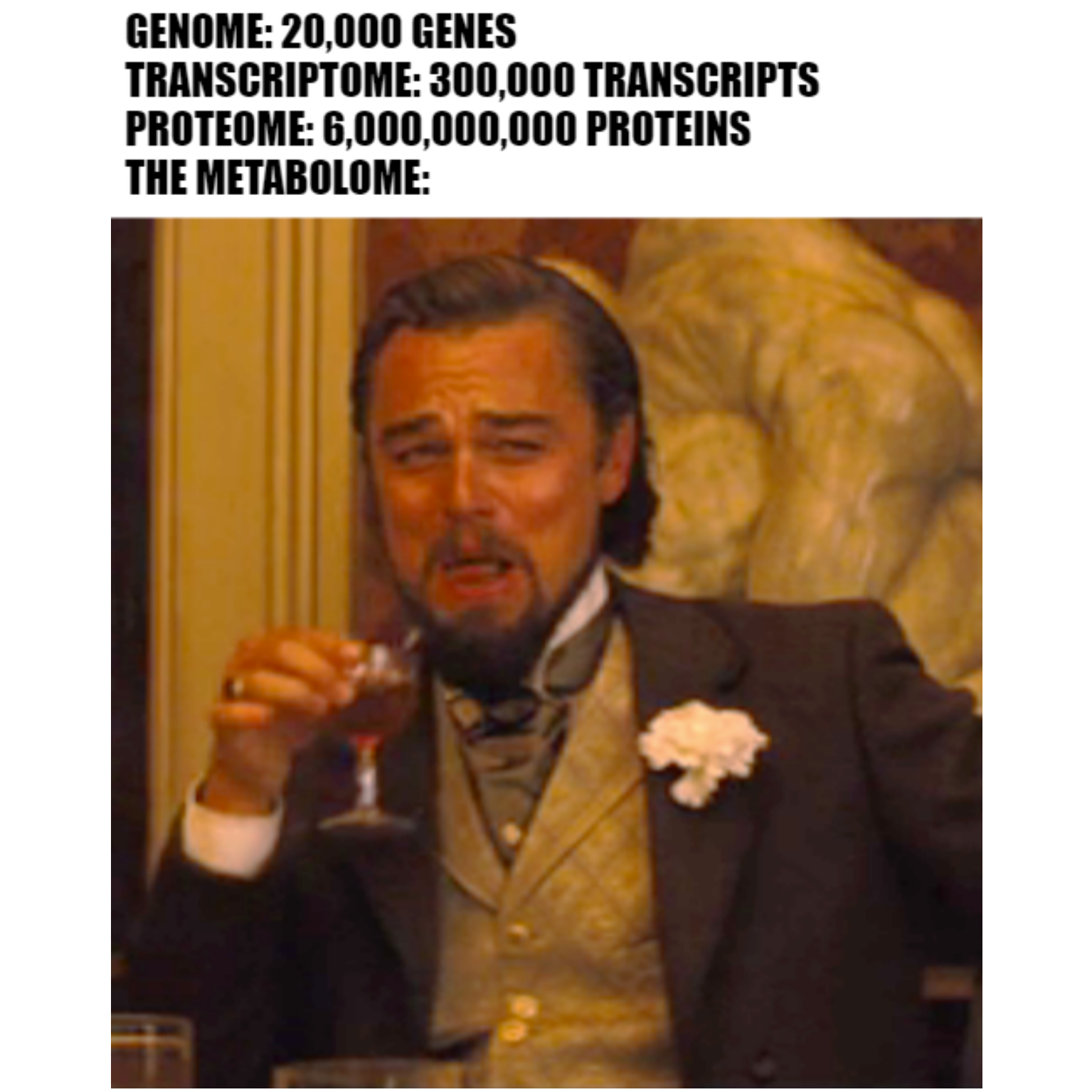Make way for the METABOLOME ..ome ..ome.. ome!!!
What's the biggest Ome of them all?

The METABOLOME ..ome ..ome.. ome!!!
There are a lot of Omes:
The Genome - stores all of our genetic information in two sets of 23 chromosomes.
The Epigenome - the non-DNA sequence alterations that impact gene expression.
The Transcriptome - all of the RNA transcripts that are produced as a result of gene expression.
The Proteome - all of the proteins that are produced as a result of RNA translation.
The Metabolome - all of the metabolites produced as a part of cellular metabolism.
Unfortunately, it's hard to study the metabolome because each successive 'ome' away from the genome represents an amplification.
One gene sequence in your DNA can produce hundreds of RNA transcripts, which in turn can be translated into thousands of copies of a protein, which then can produce tens of thousands of metabolites as a result of performing a cellular function.
There might be 22,000 genes in a genome but there are billions of metabolite molecules in a metabolome!
But what exactly is a metabolite?
It's defined as a substrate, intermediate or an end product of cellular metabolism. So they cover the whole range of metabolic inputs and outputs.
We know that metabolites can function as signaling molecules and serve as important markers of disease or cellular function.
Recent improvements in high throughput analytical techniques have allowed us to study the metabolome more closely and create metabolic profiles.
There's still a lot to learn but we've found that each tissue, organ, body fluid and disease state can have their own unique metabolomes.
Studying how these profiles change over time is important for understanding health and disease because the metabolome is a direct read out of the physiology of an organism.
Part of the challenge of studying the genome, the transcriptome and the proteome is that it's hard to tell what the immediate functional impact any of these have on an organism.
Is a gene expressed? We have to look at the transcriptome. Does an RNA make a protein? We have to look at the proteome. Is a protein active? We have to look at the metabolome.
These Omes are interconnected in important ways and so we kind of have to look at all of them.
But, by looking at the metabolites present within a sample, we can basically work our way backwards through the Omes because metabolites are the ultimate end point of cellular function!
So how do we look at billions of metabolites at a time and then make sense of everything that we see?
The two most common methods here are mass spectrometry and nuclear magnetic resonance spectrometry.
Deciding what's signal and what's noise is the biggest challenge to date and we're still in the process of turning our bulk measurements into broadly applicable and actionable information.
But as with the other Omes, the metabolome represents an exciting area of continued research and is one of the Omes to keep an eye on!

